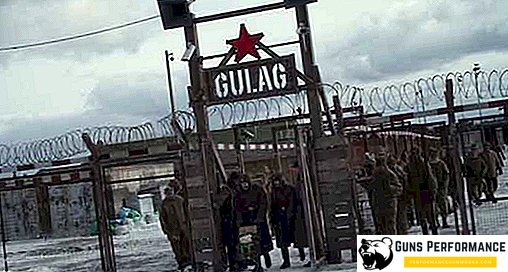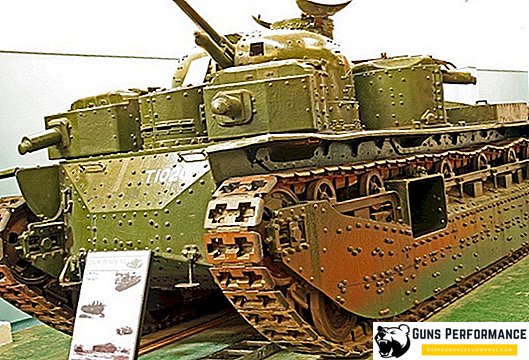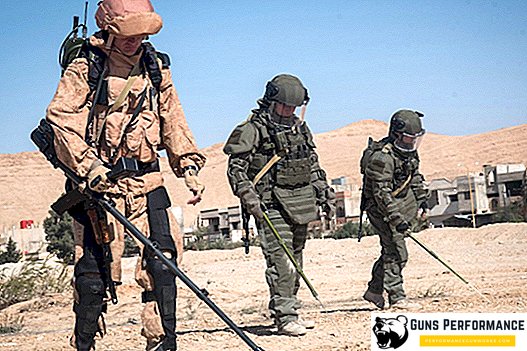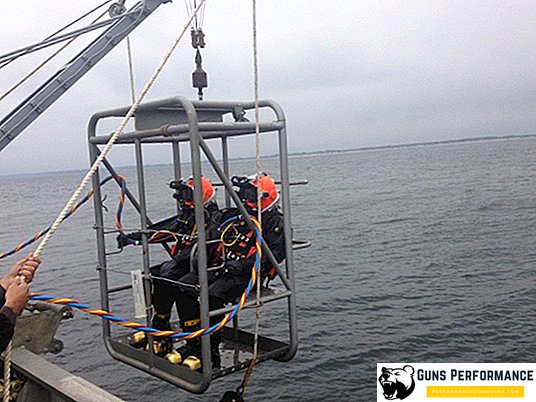
The formation of the networks of the Gulag began in 1917. It is known that Stalin was a big fan of the camps of this type. The Gulag system was not just a zone where inmates served their sentences, it was the main engine of the economy of that era. All the grand construction projects of the 1930s and 1940s were carried out by prisoners. During its existence, the Gulag has been visited by many categories of the population: from murderers and gangsters to scientists and former members of the government whom Stalin suspected of treason.
How did the Gulag
Most of the information about the Gulag refers to the end of the twenties and the beginning of the 30s of the twentieth century. In fact, this system began to emerge immediately after the Bolsheviks came to power. The program of the "Red Terror" provided for the isolation of objectionable classes of society in special camps. The first inhabitants of the camps were former landowners, factory owners and representatives of the rich bourgeoisie. At first, the camps were not led by Stalin, as is commonly thought, but by Lenin and Trotsky.
When the camps were filled with prisoners, they were transferred to the Cheka, under the leadership of Dzerzhinsky, who introduced the practice of using labor of prisoners to restore the destroyed economy of the country. By the end of the revolution, the number of camps increased from 21 to 122 by the efforts of the “iron” Felix.
In 1919, the system was already formed, which was destined to become the basis of the Gulag. The war years led to the complete lawlessness that was going on in the camps. In the same year, the Northern camps were established in the Arkhangelsk province.
Creation of the Solovetsky Gulag

In 1923, the famous "Solovki" were created. In order not to build barracks for prisoners, an ancient monastery was included in their territory. The famous Solovetsky Special Purpose Camp was the main symbol of the Gulag system in the 20s. The project of this camp was proposed by Unshlikht (one of the leaders of the GPU), who was shot in 1938.
Soon the number of prisoners in Solovki expanded to 12,000 people. The conditions of detention were so harsh that over the entire existence of the camp, according to official statistics alone, more than 7,000 people died. During the famine of 1933, more than half died of this number.
Despite the reigning cruelty and mortality in the Solovki camps, they tried to hide information from the public. When in 1929 the famous Soviet writer Gorky arrived in the archipelago, who was considered an honest and ideological revolutionary, the camp authorities tried to hide all the unsightly aspects of prisoners' lives. The hopes of the inhabitants of the camp that the famous writer would tell the public about the inhuman conditions of their detention were not justified. The bosses threatened all who had spoken harsh punishment.
Gorky was amazed at how work turns criminals into law-abiding citizens. Only in a children's colony, one boy told the writer the whole truth about the regime of the camps. After the writer's departure, this boy was shot.
What fault could they send to the Gulag
New global construction projects required more and more workers. Investigators were assigned the task of blaming as many innocent people as possible. Denunciations in this case were a panacea. Many uneducated proletarians took the opportunity to get rid of unwanted neighbors. There were standard charges that could be applied to almost anyone:
- Stalin was an inviolable person, therefore a strict retribution was relied on for any words discrediting the leader;
- Negative attitude to collective farms;
- Negative attitude to bank government securities (loans);
- Sympathy for counterrevolutionaries (especially Trotsky);
- Admire the west, especially the United States.
In addition, any use of Soviet newspapers, especially with portraits of managers, was punished for a period of 10 years. It was enough to wrap up a breakfast in the newspaper with the image of the leader, and any watchful fellow at work could turn in the "enemy of the people."
The development of camps in the 30s of the 20th century
The Gulag camp system reached its peak in its 30s. Visiting the museum of the history of the Gulag, you can see what horrors were happening in the camps in these years. The labor code of the RSFS was legally approved labor in the camps. Stalin constantly forced to carry out powerful campaign campaigns to convince the citizens of the USSR that the camps contained only enemies of the people, and the Gulag is the only humane way to rehabilitate them.
In 1931, the most large-scale construction of the Soviet era began - the construction of the White Sea Canal. This project was presented to the public as a great achievement of the Soviet people. An interesting fact is that the press spoke positively about the criminals involved in the construction of BAM. At the same time, the merits of tens of thousands of political prisoners were held back.
Often criminals collaborated with the camp administration, representing another lever for demoralizing political prisoners. The laudatory odes to the thieves and gangsters who made “Stakhanov’s” norms at the construction site were constantly heard in the Soviet press. In fact, criminals forced simple political prisoners to work for themselves, brutally and revealingly cracking down recalcitrant ones. Attempts by former personnel of the military to impose order in the camp environment were stopped by the camp administration. The emerged leaders were shot or set on them by hardened criminals (a whole system of incentives for political punishment was developed for them).
The only available method of protest for political prisoners was hunger strike. If solitary acts did not lead to anything good except a new wave of bullying, then mass hunger strikes were considered counter-revolutionary activities. The instigators were quickly calculated and shot.
Skilled labor in the camp
The main problem of the Gulag was the huge shortage of skilled workers and engineers. Difficult construction problems should be solved by high-level specialists. In 30 years, the entire technical stratum consisted of people who studied and worked under the royal power. Naturally, to accuse them of anti-Soviet activities was not difficult. The camp administrations sent lists to the investigators which specialists were required for large-scale construction projects.
The position of the technical intelligentsia in the camps practically did not differ from the position of other prisoners. For honest and hard work, they could only hope that they would not be subjected to mockery.
Most of all lucky specialists who worked in secret secret laboratories in the camps. There were no criminals there, and the conditions of detention of such prisoners were very different from those generally accepted. The most famous scientist who has passed through the Gulag is Sergei Korolev, who was at the origins of the Soviet era of space exploration. For his merits he was rehabilitated and released, along with his team of scientists.
The participation of camps in the Soviet economic system
All large-scale pre-war construction projects were completed with the help of slave labor of cons. After the war, the need for this workforce only increased, since a lot of workers were needed to restore the industry.
Even before the war, Stalin abolished the parole system for shock labor, which led to the deprivation of prisoners' motivation. Previously, for shock work and exemplary behavior, they could hope to reduce the term of imprisonment. After the abolition of the system, the profitability of the camps has plummeted. Despite all the atrocities. The administration could not force people to carry out work with high quality, especially since poor rations and poor sanitation in the camps undermined people's health.
Women in the Gulag

The wives of traitors to their homeland were kept in "ALZHIRE" - Akmola Gulag camp. For refusing "friendship" with representatives of the administration, it was easy to get an "increase" in time or, even worse, a "ticket" to the male colony, from which they rarely returned.
ALGERIA was founded in 1938. The first women who got there were the wives of the Trotskyists. Often, along with their wives, other members of the prisoners' family, their sisters, children, and other relatives also went to camps.
The only method of protest for women was the constant petitions and complaints that they wrote to various authorities. Most complaints did not reach the addressee, but the authorities mercilessly dealt with the complainants.
Children in Stalin's camps

In the 1930s, all homeless children were placed in gulag camps. Although the first children's labor camps appeared in 1918, after April 7, 1935, when the decree on measures to combat juvenile crime was signed, it became widespread. Usually the children had to be kept separately, often they turned out to be with adult criminals.
Adolescents were subject to all penalties, including execution. Often, 14-16-year-olds were shot just for being repressed children and "imbued with counter-revolutionary ideas."
Gulag History Museum
The Gulag History Museum is a unique complex that has no analogues in the world. It presents the reconstruction of individual fragments of the camp, as well as a huge collection of artistic and literary works created by former prisoners of the camps.
A huge archive of photographs, documents and things of the inhabitants of the camp allows visitors to appreciate all the horrors that were happening in the camps.
Liquidation of the Gulag
After Stalin’s death in 1953, the gradual elimination of the Gulag system began. A few months later an amnesty was declared, after which the population of the camps was halved. Sensing a loosening of the system, the prisoners began mass riots, seeking further amnesties. A huge role in the elimination of the system played Khrushchev, who strongly condemned the personality cult of Stalin.
The last head of the main directorate of the Kholodov labor camps was retired in 1960. His departure marked the end of the Gulag era.












